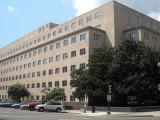(CIDRAP Business Source Osterholm Briefing) – What have we learned during the past year regarding our encounter with novel H1N1 and the first influenza pandemic of the 21st century? How much will we remember of what we learned? And will the lessons learned make any lasting changes within our organizations?
These are questions I pondered when I was invited to be one of three panelists for "Pandemic Is Declared: Lessons Learned from the 2009 Season," a plenary session at the Continuity Insights 2010 Management Conference last week in New Orleans. Panelists had 10 minutes to present and the next 30 to field questions from the moderator and audience.
Trying to squeeze into 10 minutes what we have learned through the riptide of the last 12 months was daunting—and well worth the effort. CIDRAP Business Source has spent the past year sorting through thousands of research reports, guidance documents, media reports, polls, and issue updates as well as talking with hundreds of experts in business continuity, public health, risk management, infectious disease, risk communication, healthcare, and government. Distilling all that input into information you can use is our singular mission. Dr. Osterholm asked me share my presentation and observations with you today.
What have we learned during the past year?
I offer this list with the following caveat: We can't say with any certainty that the novel 2009 H1N1 pandemic has passed; therefore, lessons from the past 12 months may only be a stopping-off point in the first pandemic of the 21st century. One quote from Keiji Fukuda of the World Health Organization (WHO) never strays far from my thoughts: "Influenza and pandemics are humbling." That said, here's what I believe we have learned since this virus emerged this time last year and began its sweep across the globe.
Containment is unlikely. The novel H1N1 pandemic virus moved too quickly out of Mexico to halt its spread with such efforts as regional antiviral "blankets" or border closures. Unless global disease surveillance capacity can reach a point of being able to pinpoint the next influenza pandemic virus within days of its emergence, there's no reason to believe that preemptive containment will ever work.
Preparedness efforts paid off. Though they had to scale back their response when H1N1's impact did not appear as severe as expected, organizations that spent time and resources to prepare for a pandemic are seeing benefits (eg, employee trust, credibility). Such organizations have been able to pivot as the pandemic unfolded, rather than scramble to catch up.
Networking paid dividends. Partnerships built before the pandemic with public health authorities, other businesses, even competitors gave organizations we've interviewed an edge when it came to getting the best information for making decisions.
Good communication earned employee trust. Among the practices we've heard companies say helped were providing information in bite sizes rather than long lectures or meetings, offering e-mail addresses to receive and respond to employee questions, and rounding out electronic communication with low-tech posters and mailing stuffers. Honesty was much appreciated by employees.
Media coverage was uneven, often conflicting, and not reliable. The downsizing of legacy media has squeezed out many of the journalists who had a strong working knowledge of infectious diseases. Major news organizations do not see their role as mouthpieces for public health communication. And, owing to wildly fluctuating coverage of the pandemic, businesses could not rely on news media for a reality check. Worse, misinformation spread quickly through narrow social media channels.
Local and state public health agencies struggled with the flow of vaccine. As the primary channel through which the H1N1 vaccine traveled, state and local public health agencies bore the brunt of delivery delays and a fragmented distribution system. They were also the source of information for organizations trying to access vaccines. Already stretched thin by budget cuts during the past decade, agencies were hard-pressed to keep up with the demands of dealing with a pandemic.
With vaccine, timing is everything. Private-sector efforts to work with public health agencies to distribute vaccine broke down when supply did not meet demand. The old vaccine development technology and distribution system isn't reliable for getting vaccine to employees fast enough to protect them.
Uncertainty is a given. Everyone was taken by surprise by the virus that emerged (another H1N1 virus, not H5N1 or some other new influenza virus), where it emerged (North America, not Asia or Africa), and the illness that it caused in most—though not all—people it infected (similar to seasonal influenza). Flexibility and the ability to take action proportional to the risk at hand became the new gold standard. Given ongoing uncertainty, efforts to predict the pandemic's course too soon could be risky business. As a business continuity manager from a major airline told me: "I don't trust this thing is over."
Stockpiles of expired antiviral drugs should be kept for now if stored properly. The US Food and Drug Administration urged organizations with antiviral stockpiles nearing expiration dates to keep them properly stored while the agency considered such options as shelf-life extensions to make the medications available if needed.
Supplies of surgical masks and N95 face-fitting respirators disappeared quickly. While supply chains for many critical products and services were not interrupted during the pandemic, they certainly were for critical personal protective equipment. Stockpiling paid off, though unused supplies remain an issue.
Not all sick workers will stay home. While some businesses came up with creative ways to encourage sick employees to stay away from the workplace, the issue of presenteeism during an influenza pandemic remains problematic, especially with hourly wage earners.
How much will we remember of what we learned?
From my vantage point, organizations that invested in preparedness seem most eager to find ways to make stick what is in their control. I have no doubt these companies will find creative ways to take what they've learned and embed changes in their organizations. But what concerns me are the organizations that didn't prepare and haven't felt any impact. I have heard over and over again this question: "Was H1N1 just another Y2K?" One of my co-panelists had an excellent answer: "Y2K was a one-time event; pandemics will always be with us."
Will the lessons learned make any lasting changes in our organizations?
I certainly hope so. The novel H1N1 pandemic has given us a baseline against which we can measure our next pandemic response. At some point, the novel H1N1 pandemic will fizzle. The people who experienced it will move on. Organizations will shift and change as they always do. And another influenza pandemic will emerge. Will we be ready? Possibly, if we continue to share what we've learned and do something with it. Mostly likely not if apathy spreads as quickly as the H1N1 virus did.
Kathleen Kimball-Baker is managing editor of the CIDRAP Business Source.



















